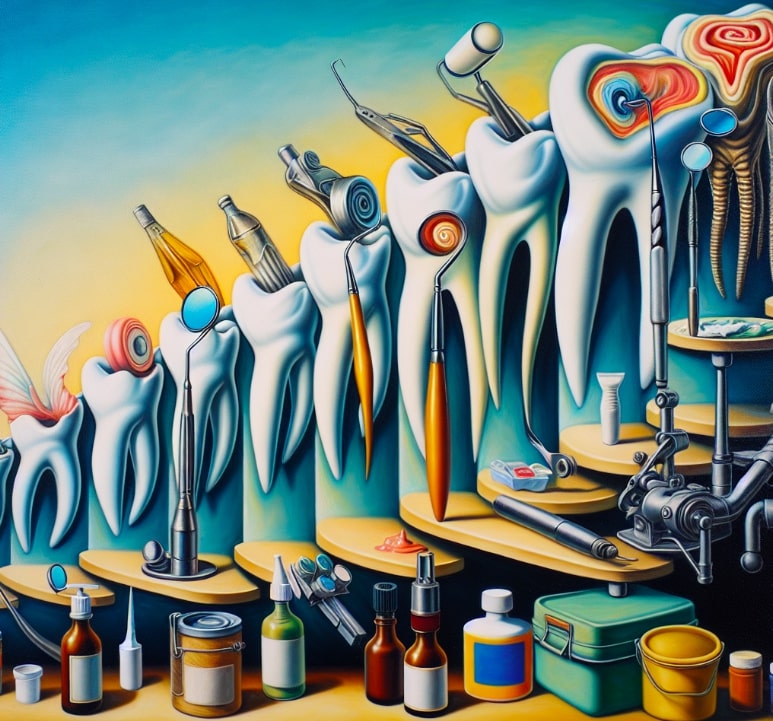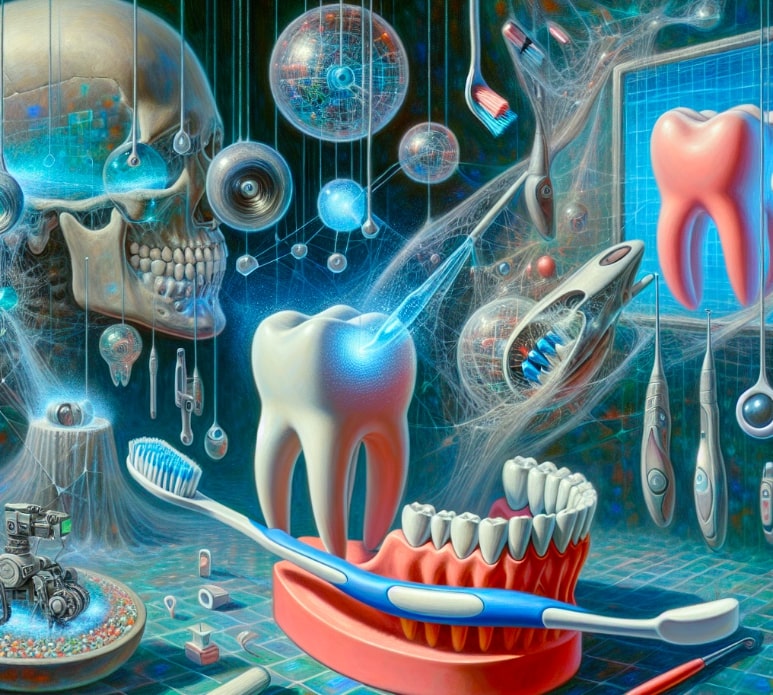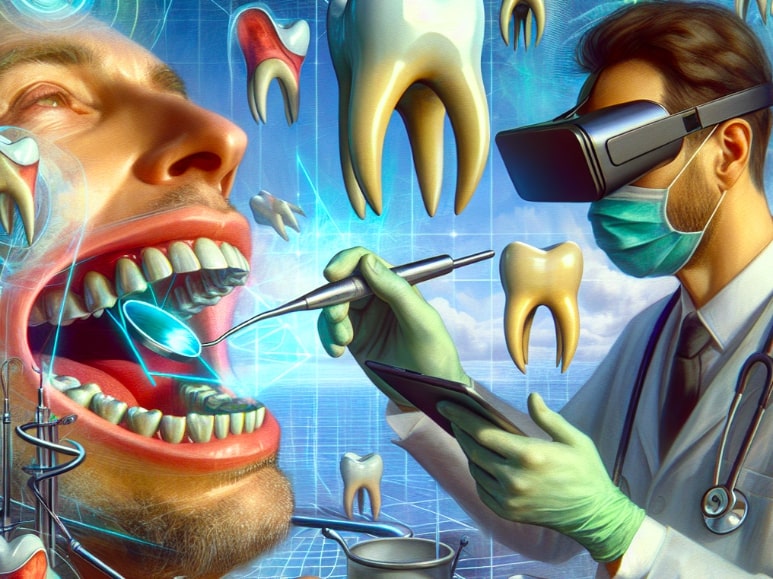In recent years, the field of dentistry has witnessed significant advancements in technology, revolutionizing the way oral healthcare is delivered. From artificial intelligence and 3D printing to augmented reality and robotics, dental office technology has transformed the diagnosis, treatment, and overall patient experience. As we look ahead to 2024, it is crucial to explore the emerging trends that will shape the future of dental practices. This article will delve into the various technological innovations that are set to revolutionize oral healthcare in the coming years.
Introduction to Dental Office Technology Trends
Dental office technology refers to the tools, equipment, and software used in dental practices to enhance patient care, improve efficiency, and streamline processes. These technological advancements have the potential to transform the way dentists diagnose and treat oral health conditions, as well as improve patient education and overall experience. By embracing these trends, dental professionals can stay at the forefront of the industry and provide the highest quality of care to their patients.
The Evolution of Dental Office Technology: A Brief Overview

Over the years, dental technology has evolved significantly, paving the way for innovative solutions that were once unimaginable. From the introduction of X-rays in the early 20th century to the development of digital imaging and CAD/CAM systems, dentistry has come a long way in terms of diagnostic capabilities and treatment options. These advancements have not only improved the accuracy of diagnoses but also allowed for more precise and efficient dental procedures.
In recent years, there has been a growing focus on incorporating technology into every aspect of dental practice, from patient management systems to chairside devices. This integration has led to improved communication, streamlined workflows, and enhanced patient outcomes. As we move towards 2024, the pace of technological advancements in dentistry is expected to accelerate, bringing forth a new era of oral healthcare.
Artificial Intelligence in Dentistry: Enhancing Diagnosis and Treatment

Artificial intelligence (AI) has emerged as a game-changer in various industries, and dentistry is no exception. AI algorithms can analyze vast amounts of patient data, including medical history, radiographs, and clinical notes, to assist dentists in making accurate diagnoses and treatment plans. By leveraging machine learning and deep learning techniques, AI can identify patterns and predict outcomes, enabling dentists to provide personalized and evidence-based care.
One of the key benefits of incorporating AI in dental practices is the ability to detect early signs of oral diseases, such as cavities and periodontal disease. AI-powered imaging analysis can identify subtle changes in dental X-rays that may go unnoticed by the human eye, allowing for early intervention and prevention of further complications. Additionally, AI algorithms can assist in treatment planning by simulating different scenarios and predicting the success rates of various treatment options.
Furthermore, AI-powered chatbots and virtual assistants can enhance patient communication and education. These intelligent systems can provide patients with real-time information about their oral health, answer common questions, and even schedule appointments. By automating routine tasks, dental professionals can focus more on providing personalized care and building strong patient relationships.
3D Printing: Transforming Dental Prosthetics and Restorations
3D printing, also known as additive manufacturing, has revolutionized various industries, and dentistry is reaping the benefits of dental office technology. Traditionally, the creation of dental prosthetics and restorations involved multiple steps, including taking impressions, sending them to a dental laboratory, and waiting for the final product. With 3D printing, this process can be significantly streamlined, saving time and improving accuracy.
By using digital scans of a patient’s mouth, dentists can design and fabricate dental prosthetics, such as crowns, bridges, and dentures, in-house using 3D printers. This eliminates the need for outsourcing to dental laboratories, reducing costs and turnaround times. Moreover, 3D printing allows for the creation of highly customized and precise dental restorations, ensuring a better fit and improved patient satisfaction.
Another area where 3D printing is making a significant impact is in the field of orthodontics. Clear aligners, such as Invisalign, are now being manufactured using 3D printing technology. This enables orthodontists to create customized treatment plans and aligners that are tailored to each patient’s unique dental anatomy. The use of 3D printing in orthodontics has not only improved treatment outcomes but also made orthodontic care more accessible to a larger population.
Augmented Reality in Dentistry: Improving Patient Education and Treatment Planning

Augmented reality (AR) is a technology that overlays digital information onto the real world, enhancing the user’s perception and interaction with their surroundings. In dentistry, AR has the potential to revolutionize patient education and treatment planning by providing a visual representation of dental conditions and proposed treatment outcomes.
By using AR headsets or mobile applications, dentists can show patients a virtual representation of their teeth and gums, highlighting areas of concern and explaining treatment options. This immersive experience allows patients to better understand their oral health conditions and actively participate in the decision-making process. Moreover, AR can simulate the post-treatment appearance, giving patients a glimpse of how their smile will look after undergoing specific procedures.
AR can also assist dentists in treatment planning by providing real-time guidance during procedures. By overlaying digital images onto the patient’s mouth, dentists can visualize the desired outcome and ensure precise placement of dental implants, for example. This technology reduces the margin of error and improves the overall accuracy of dental procedures.
Robotics in Dentistry: Automating Procedures for Precision and Efficiency
Robotics has made significant advancements in various industries, and dentistry is now embracing this technology to automate certain procedures and enhance precision. Robotic systems can assist dentists in performing complex tasks, such as dental implant placement and root canal procedures, with greater accuracy and efficiency.
One of the key advantages of using robotics in dentistry is the elimination of human error. Robots can perform repetitive tasks with consistent precision, reducing the risk of complications and improving treatment outcomes. Additionally, robotic systems can access hard-to-reach areas of the mouth, enabling dentists to perform minimally invasive procedures and preserve healthy tooth structure.
Moreover, robotics can enhance the efficiency of dental practices by reducing procedure times and increasing patient throughput. By automating certain tasks, such as the preparation of dental restorations or the sterilization of instruments, dental professionals can focus more on patient care and spend less time on routine activities.
Telehealth and Teledentistry: Expanding Access to Oral Healthcare
Telehealth and teledentistry have gained significant traction in recent years, especially in remote or underserved areas where access to oral healthcare is limited. These technologies leverage telecommunications and digital platforms to provide remote consultations, diagnosis, and treatment planning.
Telehealth allows patients to connect with dental professionals through video conferencing or online platforms, eliminating the need for in-person visits. This is particularly beneficial for patients who live in rural areas or have mobility issues. Through telehealth, dentists can assess oral health conditions, provide advice, and even prescribe medications, reducing the need for unnecessary travel and improving access to care.
Teledentistry, on the other hand, focuses specifically on dental consultations and treatment planning. By using digital images and patient data, dentists can remotely assess dental conditions and recommend appropriate treatment options. This technology is particularly useful for triaging emergency cases, providing timely care, and reducing the burden on emergency departments.
Telehealth and teledentistry have become even more relevant in light of the COVID-19 pandemic, as they allow for the continuation of oral healthcare services while minimizing the risk of virus transmission. These technologies are expected to continue expanding in the coming years, bridging the gap between patients and dental professionals and improving access to oral healthcare.
Blockchain Technology in Dentistry: Securing Patient Data and Streamlining Processes
Blockchain technology, originally developed for cryptocurrencies like Bitcoin, has found applications in various industries, including healthcare. In dentistry, blockchain can play a crucial role in securing patient data, streamlining administrative processes, and ensuring transparency.
One of the key advantages of blockchain technology is its ability to provide a secure and tamper-proof system for storing and sharing patient data. By using cryptographic algorithms and decentralized networks, blockchain can protect sensitive information from unauthorized access or manipulation. This enhances patient privacy and data security, addressing one of the major concerns in healthcare.
Moreover, blockchain can streamline administrative processes, such as insurance claims and billing. By using smart contracts, which are self-executing agreements stored on the blockchain, dental practices can automate payment processes and reduce the administrative burden. This not only saves time and resources but also minimizes the risk of errors or fraudulent activities.
Blockchain technology also enables greater transparency in dental practices. Patients can have access to their own health records stored on the blockchain, ensuring transparency and empowering them to make informed decisions about their oral healthcare. Additionally, blockchain can facilitate the sharing of anonymized patient data for research purposes, leading to advancements in dental treatments and outcomes.
Virtual Reality in Dentistry: Reducing Dental Anxiety and Enhancing Patient Experience
Dental anxiety is a common issue that affects a significant portion of the population, often leading to delayed or avoided dental visits. Virtual reality (VR) has emerged as a promising solution to alleviate dental anxiety and enhance the overall patient experience.
By using VR headsets, dental practices can create immersive and interactive environments that distract patients from the dental procedures and reduce anxiety. Patients can be transported to virtual worlds, such as a relaxing beach or a serene garden, while receiving dental treatments. This distraction technique has been shown to significantly reduce anxiety levels and improve patient comfort.
Virtual reality can also be used for patient education and treatment planning. By visualizing dental conditions and proposed treatment outcomes in a virtual environment, patients can better understand the procedures and actively participate in the decision-making process. This empowers patients and improves treatment acceptance rates.
Furthermore, virtual reality can be used as a training tool for dental professionals. By simulating various dental procedures in a virtual environment, dentists and dental students can practice and refine their skills without the need for real patients. This enhances the quality of dental education and ensures that dental professionals are well-prepared to deliver the highest standard of care.
The Future of Dental Office Technology: Challenges and Opportunities
As dental office technology continues to evolve, it is essential to consider the challenges and opportunities that lie ahead. One of the main challenges is the cost associated with adopting and implementing new technologies. Dental practices need to invest in equipment, software, and training to stay up-to-date with the latest advancements. However, the long-term benefits, such as improved patient outcomes and increased efficiency, outweigh the initial investment.
Another challenge is the need for ongoing education and training. Dental professionals must continuously update their knowledge and skills to effectively utilize new technologies. Continuing education programs, conferences, and workshops play a crucial role in keeping dental professionals informed about the latest trends and best practices.
Furthermore, the integration of dental office technology requires careful planning and consideration of workflow processes. Dental practices need to ensure that the technology seamlessly integrates with existing systems and does not disrupt patient care. This may involve redesigning office layouts, training staff, and implementing new protocols.
Despite these challenges, the opportunities presented by dental office technology are immense. By embracing these advancements, dental practices can improve patient outcomes, enhance the patient experience, and increase efficiency. Moreover, technology can enable dentists to expand their services and reach underserved populations, ultimately improving oral healthcare on a global scale.
FAQs:
Q: What are the benefits of incorporating artificial intelligence in dental practices?
Incorporating artificial intelligence in dental practices offers several benefits. AI algorithms can analyze vast amounts of patient data to assist dentists in making accurate diagnoses and treatment plans. AI-powered imaging analysis can detect early signs of oral diseases, allowing for early intervention and prevention. AI-powered chatbots and virtual assistants can enhance patient communication and education. Overall, AI improves the accuracy of diagnoses, enhances treatment planning, and streamlines patient care.
Q: How does 3D printing revolutionize the creation of dental prosthetics?
3D printing revolutionizes the creation of dental prosthetics by streamlining the process and improving accuracy. By using digital scans of a patient’s mouth, dentists can design and fabricate dental prosthetics in-house using 3D printers. This eliminates the need for outsourcing to dental laboratories, reducing costs and turnaround times. 3D printing allows for the creation of highly customized and precise dental restorations, ensuring a better fit and improved patient satisfaction.
Q: What are the applications of augmented reality in dentistry?
Augmented reality has several applications in dentistry. It can improve patient education and treatment planning by providing a visual representation of dental conditions and proposed treatment outcomes. AR headsets or mobile applications can show patients a virtual representation of their teeth and gums, highlighting areas of concern and explaining treatment options. AR can also assist dentists in treatment planning by providing real-time guidance during procedures, ensuring precise placement of dental implants, for example.
Q: How can robotics improve dental procedures?
Robotics can improve dental procedures by enhancing precision and efficiency. Robotic systems can assist dentists in performing complex tasks, such as dental implant placement and root canal procedures, with greater accuracy. Robots can perform repetitive tasks with consistent precision, reducing the risk of complications and improving treatment outcomes. Additionally, robotics can access hard-to-reach areas of the mouth, enabling dentists to perform minimally invasive procedures and preserve healthy tooth structure.
Q: What is telehealth and how does it impact oral healthcare?
Telehealth refers to the use of telecommunications and digital platforms to provide remote healthcare services. In dentistry, telehealth allows patients to connect with dental professionals through video conferencing or online platforms, eliminating the need for in-person visits. Telehealth improves access to oral healthcare, particularly for patients in remote or underserved areas. It enables dentists to assess oral health conditions, provide advice, and even prescribe medications, reducing the need for unnecessary travel.
Q: How does blockchain technology enhance data security in dental offices?
Blockchain technology enhances data security in dental offices by providing a secure and tamper-proof system for storing and sharing patient data. By using cryptographic algorithms and decentralized networks, blockchain protects sensitive information from unauthorized access or manipulation. This enhances patient privacy and data security, addressing one of the major concerns in healthcare. Blockchain also facilitates the sharing of anonymized patient data for research purposes, leading to advancements in dental treatments and outcomes.
Conclusion
In conclusion, as we advance into 2024 and beyond, dental office technology will continue to play a pivotal role in shaping the future of oral healthcare. By staying informed about and adopting these emerging trends, dental professionals can ensure that their practices remain at the forefront of the industry, delivering innovative, efficient, and patient-centered care.
